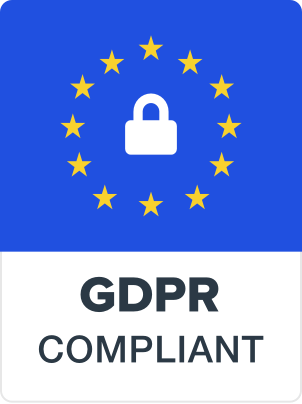8 Mastermind Tips For Real-Time Audit Reporting

July 27 , 2021
Auditing has always been a challenging task for external auditors. It requires them to utilise their full mental potential to find the evidence. The job of auditors has always been extremely tough. They almost empty their minds in completing the pile of paperwork and go back home with tiredness.
The traditional process of finding the factual proof of data and tallying the balance sheet amount exhausts these auditors. It increases their tensions and worries to handle the mess of paperwork that usually requires days to weeks in preparing financial audit reports. Many companies are fed up wasting their time and effort gathering valuable information and presenting it to their bosses.
Doing a manual audit is a cumbersome job and makes them feel wary going through the minute detail of examining petty cash vouchers. They have to collaborate with the internal auditor and other accounting department staff to collect meaningful data.
Here are the eight mindful tips to consider for real time reporting:
Creating An Initial Plan

The first and foremost tip is to create a plan that works out. It should be beneficial and profitable for a company and fulfil the core objectives of an auditor. Before conducting a real-time audit, it is necessary to have initial planning and data assembling. The pre-gathering of information helps an auditor leave no chances for error in handling the audit operation from the beginning.
Defining The Purpose And Future Scope Of Firm’s Auditing

An external and statutory auditor’s responsibility is to explain the clear purpose and futuristic potential of conducting a detailed audit. The audit purpose illustrates an auditor’s mission to execute an error-free audit and prepare a clean and transparent report.
In the scope of the audit, the professional auditors highlight the advantages of audit for the organisation. It includes preparing a clean financial record with no discrepancies and increasing the company’s profit, revenue, income, and sales.
Asking For The Necessary Financial Documents

It is a vital tip to notify the company about the audit. An auditor has to ask permission to execute the audit and show his documents’ requirements for the process. The list of documents includes a copy of the past assessment report, financial ledger, receipts of vouchers, and bank statements. Furthermore, he can also ask for the organization’s chart, copies of the board committee, and minutes of company meetings.
Collecting The Valid Evidence

Auditors are hired to collect the proof of evidence and gather the minor and major information that relates to the company. The process of data gathering is painstaking and requires hours and hours of time to dig deep into every detail, such as accounts receivables, payables, and petty cash vouchers. It involves observation, examination, and interview questions to junior and senior-level employees.
Using Automation To Prepare The Audit Reporting

Nowadays, auditors are blessed with the latest technological tools to conduct the audit process. It is better to use an inspection app rather than messing your head in piles and heaps of paperwork.
Using an audit app saves time and executes the assessment process within minutes. Automation makes life easier for auditors and makes them get rid of a traditional way of auditing. It helps auditors generate as many reports as they can by using customised templates.
Scheduling The Meeting

Arranging the meeting involves having an open session with junior administrative staff and senior key executives. In this session, the auditor presents the scope and potential of an audit. He gives a specified time duration to the board members and discusses all the matters regarding the company audit. Auditors conduct interviews with ordinary staff members and explain to them the process of auditing.
Implementing The Five C’s Rule

The popular five C rule of auditing involves the criteria, condition, cause, consequence, and corrective plan of action. These are the basic components of audit reporting that allow auditors to provide great detail of the inspection and examination process.
The criteria refer to compliance with the standard auditing practices. Likewise, condition defines the existing state of audit and allows an auditor to identify and address the financial issues.
Drafting An Unbiased Audit Report

After having a thorough inspection and examination, it is a responsibility of an external auditor to create a detailed report based on his findings. In his final report, the auditor shares his unbiased opinion about the progress and future success of the company. He also highlights and rectifies the issues that come across in the data found.
The amount of the balance sheet and income statement reflects the actual position of a business. These factors show the true value of an asset, capital, cash, and revenue that strengthen the financial status of an organisation in the stakeholder market. The expenses and liabilities must be eliminated that leave a bad impact on the customers and shareholders.
Bottom Line
Hence, in a nutshell, these above-mentioned are worthwhile tips to consider for company audit reporting. It offers the real time capture of data and information. Follow these remarkable techniques and conduct a systematic audit for any kind of organisation worldwide. Auditing gives a clear perspective of the company and predicts its future scope in the market.
Also Read: 7 Crucial Tips To Use Auditing App For Your Business
Copyright © 2024 Uraudits.com. All Rights Reserved. Privacy Policy | Legal | Terms of Use
Privacy Overview
| Cookie | Duration | Description |
|---|---|---|
| cookielawinfo-checbox-analytics | 11 months | This cookie is set by GDPR Cookie Consent plugin. The cookie is used to store the user consent for the cookies in the category "Analytics". |
| cookielawinfo-checbox-functional | 11 months | The cookie is set by GDPR cookie consent to record the user consent for the cookies in the category "Functional". |
| cookielawinfo-checbox-others | 11 months | This cookie is set by GDPR Cookie Consent plugin. The cookie is used to store the user consent for the cookies in the category "Other. |
| cookielawinfo-checkbox-necessary | 11 months | This cookie is set by GDPR Cookie Consent plugin. The cookies is used to store the user consent for the cookies in the category "Necessary". |
| cookielawinfo-checkbox-performance | 11 months | This cookie is set by GDPR Cookie Consent plugin. The cookie is used to store the user consent for the cookies in the category "Performance". |
| viewed_cookie_policy | 11 months | The cookie is set by the GDPR Cookie Consent plugin and is used to store whether or not user has consented to the use of cookies. It does not store any personal data. |









